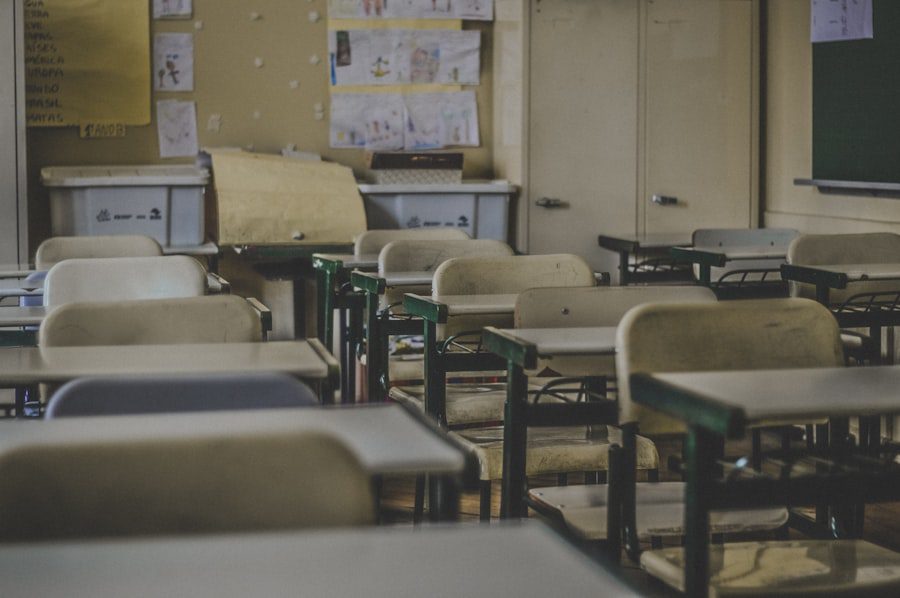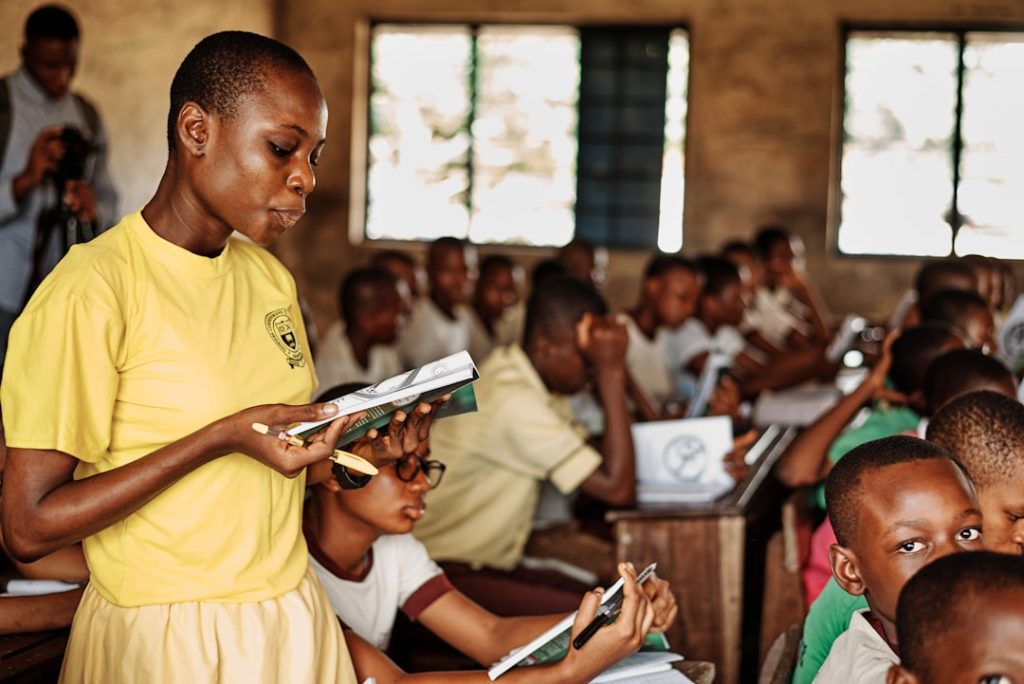Education serves as a fundamental pillar in the quest to bridge social divisions that often fragment communities. It is not merely a means of imparting knowledge; rather, it is a powerful tool that shapes attitudes, beliefs, and behaviors. By fostering critical thinking and encouraging dialogue, education can challenge stereotypes and dismantle prejudices that contribute to societal rifts.
For instance, curricula that include diverse perspectives can help students understand the complexities of social issues, thereby promoting a more nuanced view of their peers’ experiences. This understanding is crucial in a world where misinformation and bias can easily perpetuate division. Moreover, education can play a transformative role in empowering marginalized groups.
By providing access to quality education, individuals from disadvantaged backgrounds can gain the skills and knowledge necessary to advocate for themselves and their communities. Programs that focus on social justice education not only inform students about historical injustices but also inspire them to engage in activism and community service. This empowerment fosters a sense of agency and belonging, which is essential for healing societal divides.
When individuals feel valued and heard, they are more likely to contribute positively to their communities, thus reinforcing the idea that education is a catalyst for social change.
Key Takeaways
- Education plays a crucial role in addressing social divisions by promoting understanding and empathy among individuals from diverse backgrounds.
- Education has a significant impact on social cohesion by fostering a sense of community and shared values among individuals.
- Education serves as a tool for promoting inclusivity and diversity by providing opportunities for individuals from marginalized groups to access quality education.
- Critical thinking and empathy are essential components of education that help individuals understand and navigate complex social issues.
- Challenges and barriers to achieving educational equality include systemic inequalities, lack of resources, and discrimination, which need to be addressed for a more equitable education system.
The Impact of Education on Social Cohesion
The relationship between education and social cohesion is profound and multifaceted. Education systems that promote inclusivity and respect for diversity can significantly enhance social bonds among individuals from different backgrounds. Schools that implement cooperative learning strategies encourage students to work together towards common goals, fostering relationships that transcend cultural and socioeconomic barriers.
For example, programs that pair students from different neighborhoods for collaborative projects can help break down preconceived notions and build friendships based on shared experiences. Furthermore, educational institutions often serve as microcosms of society, reflecting its diversity and complexity. When students are exposed to varied cultures, languages, and traditions within the classroom, they develop a broader worldview.
This exposure not only cultivates tolerance but also encourages students to appreciate the richness that diversity brings to their lives. In this way, education acts as a unifying force, promoting understanding and collaboration among individuals who might otherwise remain isolated in their respective social groups.
Education as a Tool for Promoting Inclusivity and Diversity

Inclusivity in education is essential for creating environments where all students feel valued and respected. Educational policies that prioritize diversity in hiring practices for teachers and staff can lead to a more representative educational experience for students. When students see educators who reflect their own backgrounds, they are more likely to feel a sense of belonging and connection to the school community.
This representation can also inspire students to pursue their aspirations, knowing that success is attainable regardless of their background. Curricular reforms that emphasize multicultural education are equally important in promoting inclusivity. By integrating diverse voices into the curriculum—whether through literature, history, or the arts—educators can provide students with a more comprehensive understanding of the world around them.
For instance, including works by authors from various cultural backgrounds not only enriches the literary canon but also allows students to see themselves reflected in the stories they read. This representation fosters empathy and understanding, encouraging students to appreciate the experiences of others while recognizing their own unique identities.
The Importance of Critical Thinking and Empathy in Education
Critical thinking is an essential skill that education must cultivate to address social divisions effectively. By teaching students how to analyze information critically, educators empower them to question biases and challenge stereotypes. This analytical approach is particularly vital in an age where misinformation can spread rapidly through social media and other platforms.
For example, incorporating media literacy into the curriculum equips students with the tools necessary to discern credible sources from unreliable ones, fostering informed citizenship. Empathy is another crucial component of education that can bridge social divides. When students engage in activities that promote perspective-taking—such as role-playing or community service—they develop a deeper understanding of the challenges faced by others.
This emotional connection can lead to increased compassion and a desire to advocate for social justice. Programs that encourage dialogue about difficult topics, such as race or inequality, can also facilitate empathy by allowing students to share their experiences and listen to those of their peers. In this way, education becomes a space for healing and understanding rather than division.
Challenges and Barriers to Achieving Educational Equality
Despite the potential of education to address social divisions, significant challenges remain in achieving educational equality. Systemic issues such as funding disparities often result in unequal access to quality education across different communities. Schools in affluent areas typically receive more resources than those in low-income neighborhoods, leading to a cycle of disadvantage that is difficult to break.
This inequity not only affects academic outcomes but also limits opportunities for social mobility, perpetuating existing divisions. Additionally, implicit biases within educational systems can hinder efforts toward inclusivity. Teachers may unconsciously hold lower expectations for students from marginalized backgrounds, which can impact student performance and self-esteem.
Furthermore, disciplinary practices that disproportionately affect students of color contribute to the school-to-prison pipeline, exacerbating social divisions rather than alleviating them. Addressing these biases requires comprehensive training for educators and administrators, as well as policies that promote equity at all levels of the educational system.
Examples of Successful Educational Initiatives in Bridging Divisions

Numerous educational initiatives have successfully bridged social divisions by fostering inclusivity and understanding among diverse student populations. One notable example is the “Peer Mediation” program implemented in various schools across the United States. This initiative trains students to mediate conflicts among their peers, promoting dialogue and understanding rather than resorting to punitive measures.
By empowering students to resolve disputes amicably, schools create a culture of respect and cooperation that transcends social divides. Another successful initiative is the “Culturally Relevant Pedagogy” approach adopted by many educators. This teaching method emphasizes the importance of incorporating students’ cultural references into the learning process.
By validating students’ identities and experiences, educators foster a sense of belonging while enhancing academic engagement. Schools that have implemented this approach report improved student outcomes and increased motivation among learners from diverse backgrounds.
The Role of Educators in Fostering Understanding and Respect
Educators play a pivotal role in fostering understanding and respect among students from different backgrounds. Their influence extends beyond academic instruction; they are often seen as role models who shape students’ values and attitudes toward diversity. By creating inclusive classroom environments where all voices are heard, educators can cultivate a culture of respect that encourages collaboration and empathy.
Professional development programs focused on diversity training are essential for equipping educators with the skills needed to address social divisions effectively. These programs can provide teachers with strategies for facilitating difficult conversations about race, class, and identity while promoting an inclusive curriculum. Additionally, educators who actively engage with their communities can better understand the unique challenges faced by their students, allowing them to tailor their teaching approaches accordingly.
The Future of Education in Promoting Unity and Healing Social Divisions
Looking ahead, the future of education holds immense potential for promoting unity and healing social divisions. As society becomes increasingly interconnected through technology and globalization, educational institutions must adapt by embracing innovative teaching methods that prioritize inclusivity and critical thinking. Online platforms can facilitate cross-cultural exchanges among students from different regions, fostering global citizenship and understanding.
Moreover, there is a growing recognition of the importance of social-emotional learning (SEL) in education. By integrating SEL into curricula, schools can equip students with the skills necessary to navigate complex social dynamics while promoting mental well-being. This holistic approach not only addresses academic achievement but also nurtures compassionate individuals who are committed to building inclusive communities.
In conclusion, education remains a powerful force for addressing social divisions and promoting cohesion within society. By prioritizing inclusivity, critical thinking, and empathy, educational institutions can cultivate environments where all students feel valued and respected. As we move forward, it is imperative that we continue to invest in educational initiatives that bridge divides and foster understanding among diverse populations.


